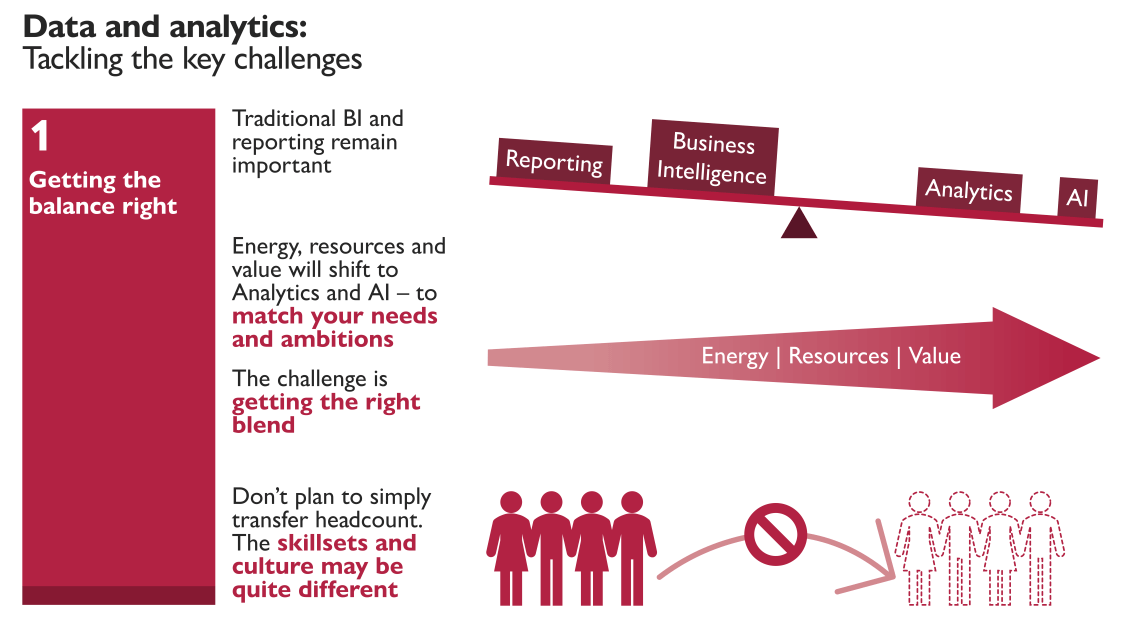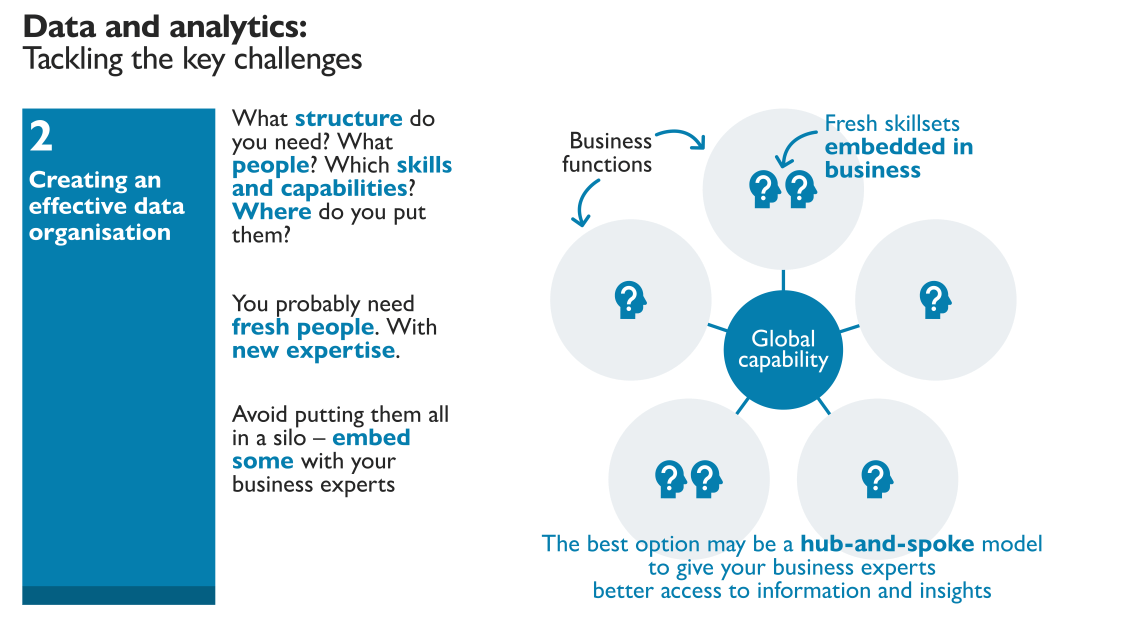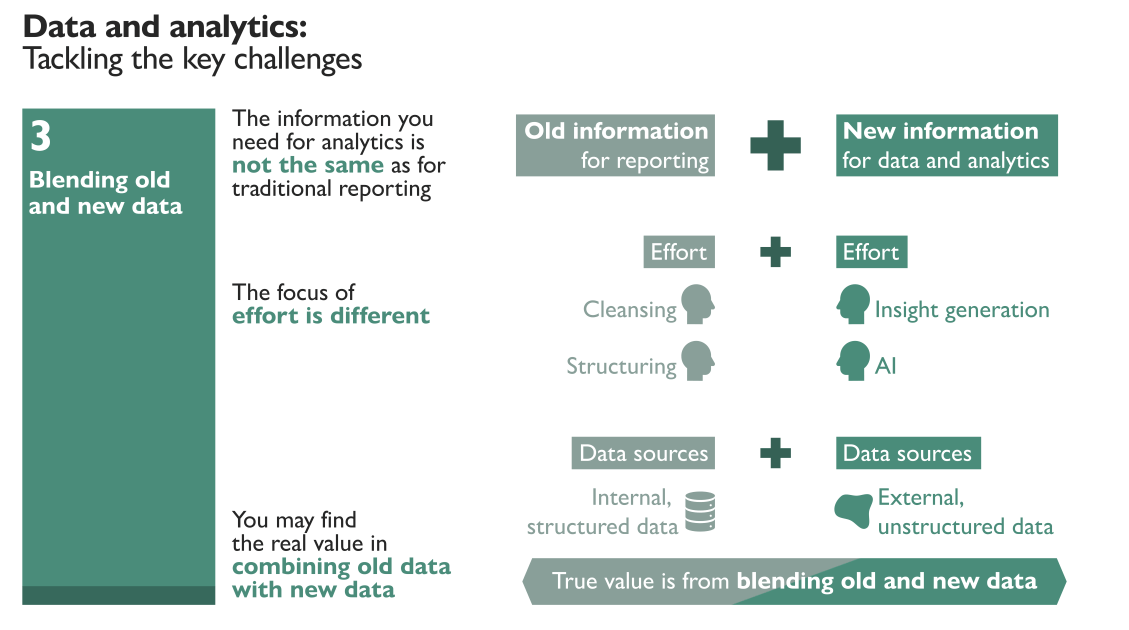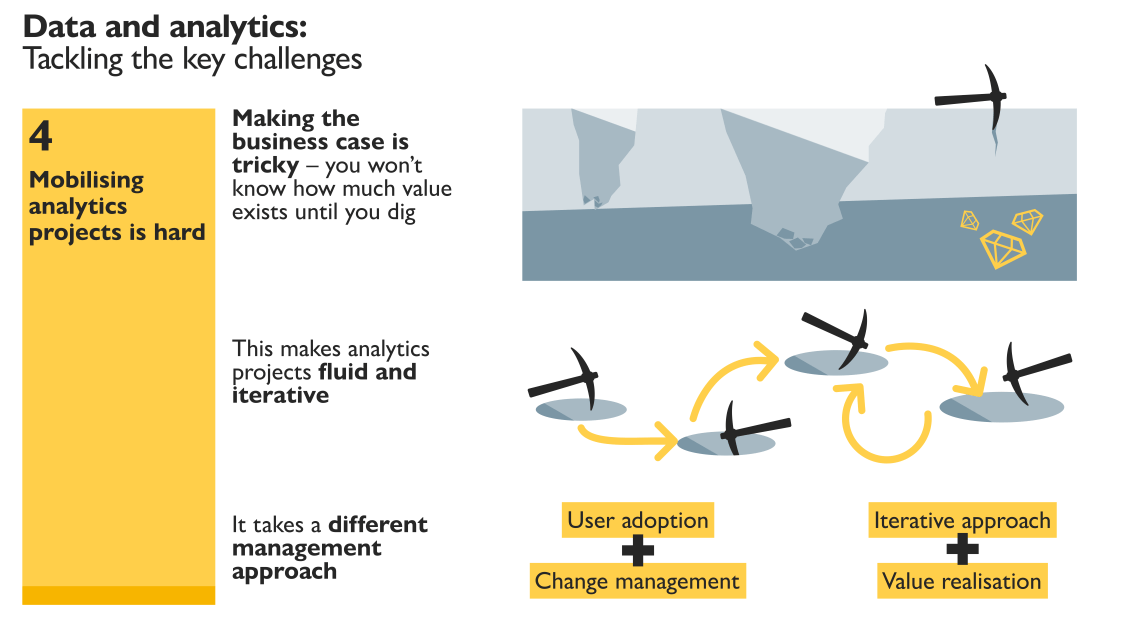Building the right data and analytics capability will open up new opportunities, both for your future business strategy and to drive current business performance. But as we know from talking with senior data leaders across a variety of leading organisations, it also comes with big challenges.
The right balance of analytics, traditional reporting and business intelligence
Both traditional reporting and business intelligence continue to have important and valuable roles. It’s a mix – one that’s determined by the needs and ambitions of each individual organisation, but also one that increasingly sees energy, resources and value shift more towards advanced analytics (including AI). A major challenge is how best to strike the right balance across all areas.
Many organisations want to redirect effort (in both headcount and funding) away from reporting towards more analytics, but there may not be a simple way to do this. The skillsets and culture are very different, so you are unlikely to be able simply to re-use or re-assign the same people. It may require a deeper reorganisation.

Creating an effective organisation structure for data and analytics
Data and analytics can be a major headache when it comes to structuring your organisation. What kind of structure do you need? What sort of people should you employ? What skills and capabilities should they have? Where do you put them in the organisation?
One key insight here is that you shouldn’t expect to be able to do analytics well by simply reusing or extending your reporting team or your business intelligence centre of excellence. The differences inherent in new data sources typically require different skills, culture and management approaches.
You may well need to employ fresh people – such as data scientists, analytics operations experts, data visualisation or AI experts, and those with sufficient understanding of the statistical analysis fundamentals.
And critically, you may be better off placing them with people at the sharp end of your business – your marketers, your supply chain experts, your product development whizzes, for example. Don’t put them all in a data team silo; sit some of them side by side with business folk. A hub and spoke model is often best. That way, together, they’ll be able to make the most of data and analytics’ great potential to drive insights and actions that transform your strategy and operations.
Old data versus new data
The information used for data and analytics may be quite different to that used for traditional reporting, which has big implications beyond organisational and structure skills.
For example, effort that is typically invested in cleansing, modelling, structuring and aligning data used for reporting may be better invested in innovative querying and insight generation techniques for analytics. Analytics will typically also place much more emphasis on use of external and unstructured data sources.
The true value in analytics, however, may often come from combining old and new data sources.
Mobilising and managing data and analytics projects
Making a business case for investment in analytics is hard. By helping you find the questions you didn’t even know to ask as well as discover new, often counter-intuitive insights, it is by its very nature somewhat speculative. There may be gold in those hills, but it’s hard to say just how much before you start to dig. This makes it important to start small, demonstrate the value, and then be prepared to develop in many small, evolutionary steps.
Analytics projects are different: inherently open-ended, iterative, fluid, hard to pin down and constantly evolving. The very scale and dynamism that makes data and analytics so powerful can also create big headaches for traditional project management. And no one is ever forced to use an analytics solution purely to execute their business process; they have to want to use it because they see the value.
All this means different management approaches are required together with the right change management. And focusing on end user take-up and value realisation is essential.
Plotting your route forward on data and analytics
Considerable organisational effort is required to overcome the common challenges with data and analytics. But as with any transformation, these issues aren’t insurmountable.
Ultimately, it requires carefully assessing your organisation’s existing capabilities and the target state required to achieve the desired objectives. These will be unique to each organisation – as is the roadmap to get you there.
Often, conducting a maturity assessment in key capability areas will be the right place to start. Learn more from our data strategy framework to get the most out of data and analytics.













